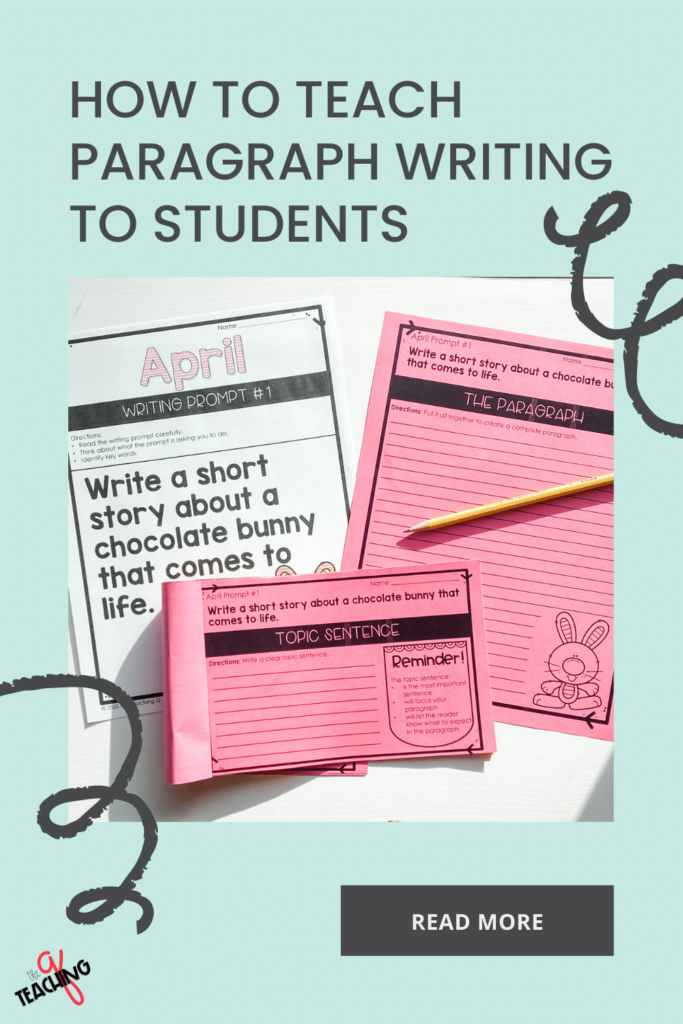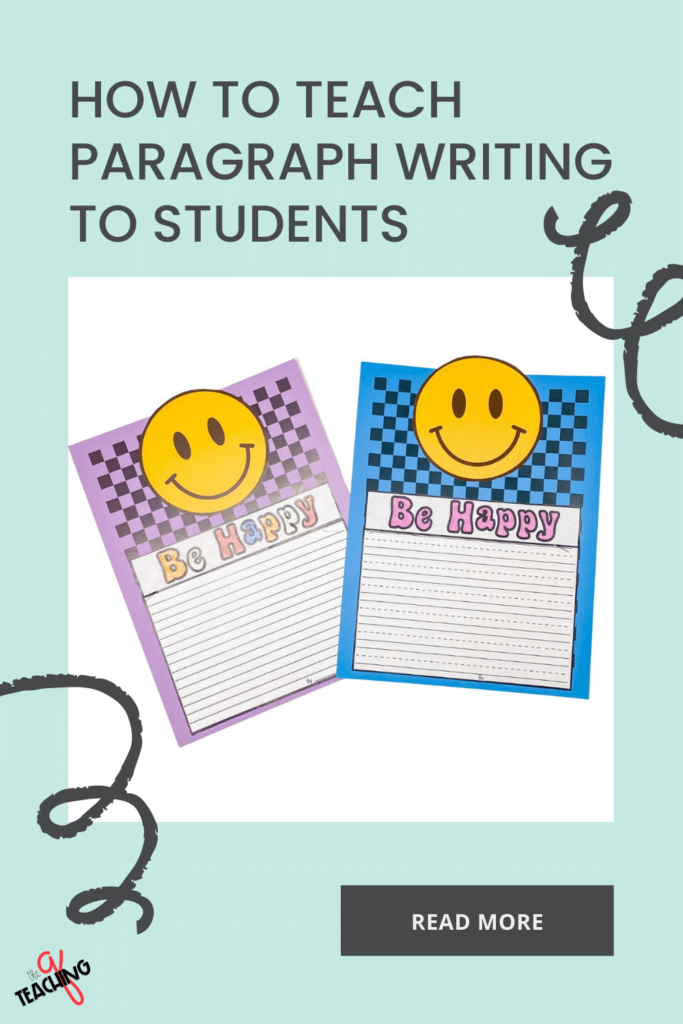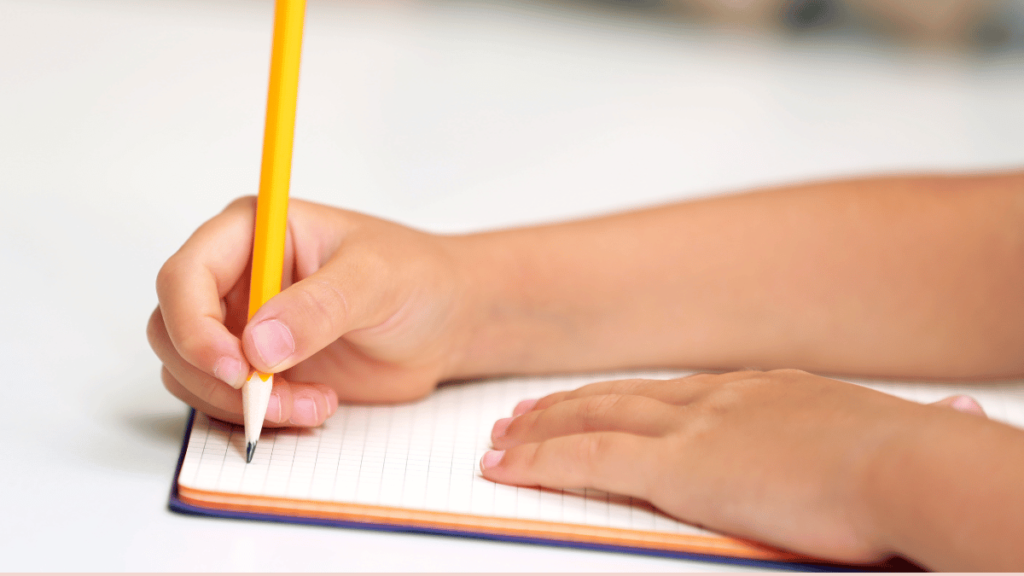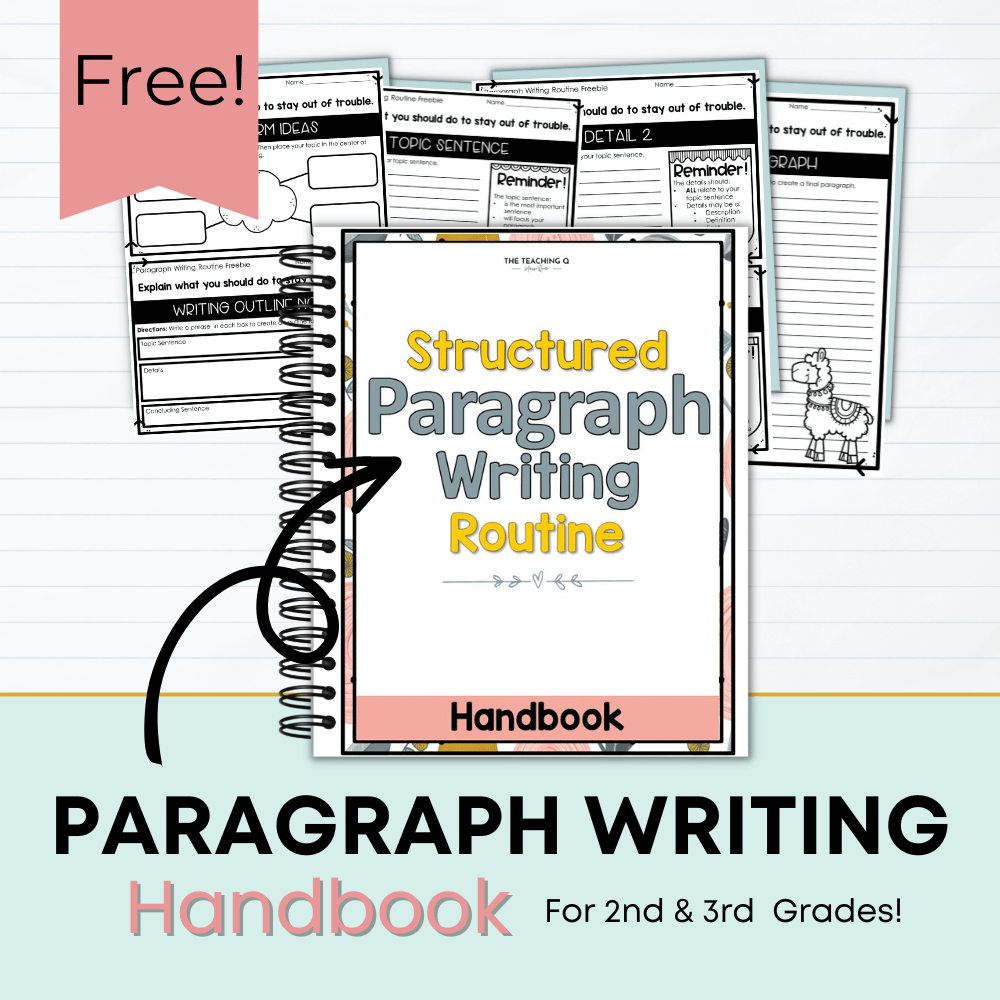You may ask yourself, how do I teach paragraph writing to young students? If so, this blog post is for you because I have five simple steps to help you teach paragraph writing skills to your students.
Five Steps of Paragraph Writing
Teaching students how to write a paragraph can be done in five easy steps. First, have students brainstorm a list of topics they know well. Second, have them choose one topic and start writing a paragraph about it. Third, tell students to focus on including key details. Fourth, provide a solid concluding statement. Fifth, get feedback and repeat.
Here are five easy steps for how to teach paragraph writing to students:
- Brainstorm a list of potential topics with students.
- Choose one topic and have students start a topic student on it.
- Encourage students to focus on key details and proper grammar and punctuation as they write.
- Concluding statement
- Repeat these steps as needed until students are comfortable writing paragraphs on their own!
Brainstorm
One way to teach paragraph writing to students is to have them brainstorm a list of topics that they know well. Once they have their list, they can choose one topic and start writing a paragraph about it.
Another option is to provide a writing prompt, and students discuss words associated with the topic as a class. This is my preferred method.
Once students write, the freedom is still theirs, but the class brainstorming is used as support.
Topic Sentence
The first step in writing a paragraph is to write a topic sentence. A topic sentence is a sentence that tells the reader what the paragraph will be about. It should be clear and concise, and it should introduce the main idea of the paragraph.
Supporting/Key Details
After the topic sentence, students should include supporting details and examples. These will help develop the paragraph’s main idea and make it more understandable for the reader.
As mentioned before, once students have chosen their topic and written their topic sentence, they should include supporting details and examples. Supporting details can be facts, statistics, quotes, or anything else that helps to develop the paragraph’s main idea.
Examples are Key!
Examples are specific instances that illustrate the main idea of the paragraph. Therefore, they can be real-world examples, hypothetical situations, or anything else to help the reader understand the concept being discussed.
Including supporting details and examples in a paragraph makes it clear and understandable. So, without them, the paragraph would likely be confusing and difficult to follow.
Conclusion Statement
Finally, students should conclude their paragraph with a sentence that ties everything together and leaves the reader with a sense of closure. By following these steps, students can learn how to write a well-organized and effective paragraph.
The final step in writing a paragraph is to include a concluding sentence. This sentence should tie everything together and leave the reader with a sense of closure. It can restate the paragraph’s main idea in different words or be a general statement about the topic related to the introductory sentence.
Either way, the concluding sentence should help the reader understand how everything in the paragraph fits together. So, it is essential to include a concluding sentence for writing a well-rounded and effective paragraph.
Feedback & Repeat
Now that you’ve taught your students basic paragraph writing skills, it’s time to provide feedback and repeat the process. That’s right. This is not a one-and-done kind of lesson. You will need to provide students with repetitive practice.
The beauty is that each time you work on paragraph writing skills, you’ll use a different writing prompt, making each lesson unique and fresh for you and the students.
Two Paragraph Writing Strategies to Adopt
To help guide my students through the paragraph writing process, I support students in two ways.
- Break up the assignment into manageable pieces.
- Provide helpful notes written on their paper to support them as they write.
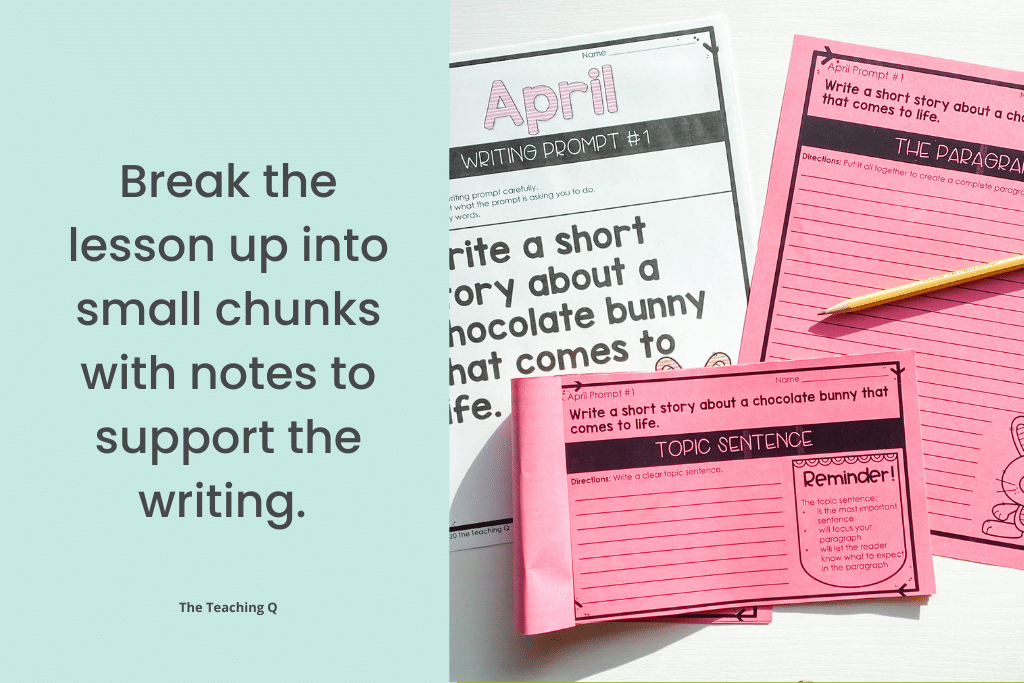
Next, I ask students to complete one step of the paragraph each day. I have found that breaking the step into small bite-sized chunks allows students to focus on just one part. The scaffolding of information is the crutch young students need for paragraph writing.
In addition to scaffolding the paragraph writing practice, I also ensure student success by providing notes on the writing paper. As students write, the essential elements of the day’s writing are printed on paper. You don’t need to worry about accidentally erasing the notes off the whiteboard. Or, if students are completing the work in another room or at home, the tips for successful writing help the student out.
Eventually, students become confident in their paragraph writing skills and will depend less on these two supports.
You can read this blog post for additional information on paragraph writing lessons. Until then, support them; you won’t be sorry.
Here’s a little video demonstrating the paragraph writing practice each day.
Done for You Material
If you, too, would like to support your writers with these strategies, you can assign each part of the paragraph each day of the week on a blank paper or in their writing journals.
But, if you’d like to have each writing tip written out on the student’s paper, as I have, you’re in luck. You can pick up the Paragraph Writing BUNDLE here or purchase each paragraph writing month by clicking on my Paragraph Writing Category in my TPT shop.
Eventually, your students have had sufficient paragraph writing practice and feel comfortable; they can apply their skills to other projects.
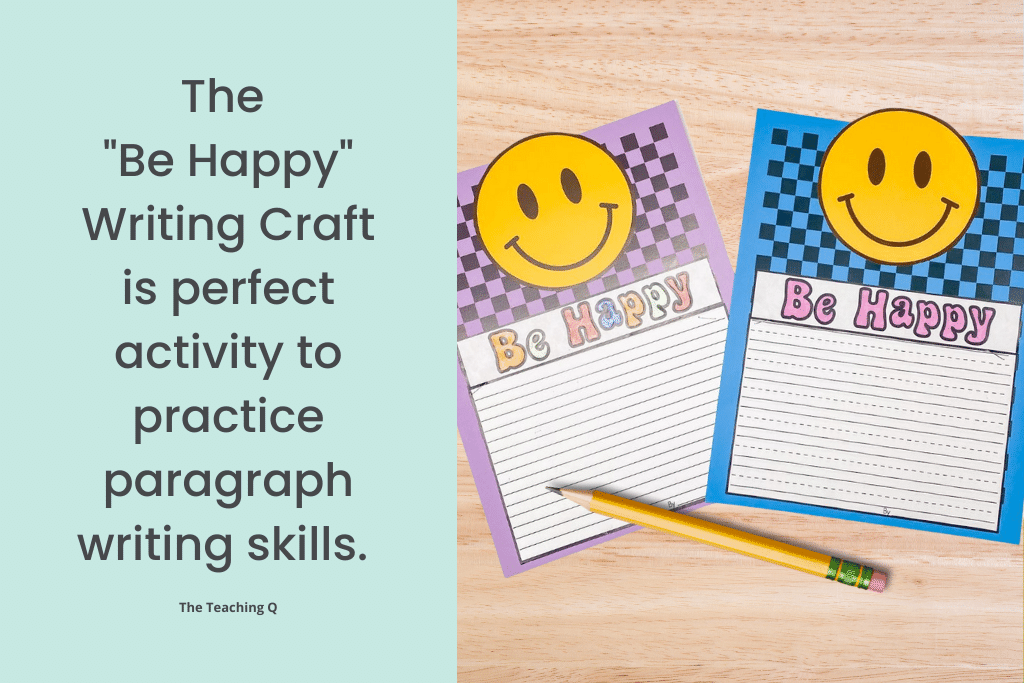
A writing craft is the perfect high-engagement activity for young writers ready to show what they know when it comes to paragraph writing. So, I believe you’ll find that the writing prompts and crafts are fun and exciting topics students enjoy writing about.
The crafts are, well, OH, SO ADORABLE!!!
Go ahead and check out the Month Writing Craft BUNDLE here, or you can see each month’s craft with this link to the category. Once there, you can look closely at each engaging writing prompt for successful paragraph writing practice.
But wait! It’s your lucky day. (Do I sound like one of those infomercials?)
With all seriousness, I do have a free sample of one of my Writing Craft Activities just for you. Try this activity out with your students first. If they love the project because it’s fun and they are successful, then come back for more.
Teaching Paragraph Writing Wrap-up
These are five easy steps for how to teach paragraph writing to students: brainstorm a list of potential topics with students, choose one topic and have students start writing a paragraph on it, encourage students to focus on key details as they write, provide a solid concluding statement, and get feedback. By following these steps, teachers can help their students learn how to write clear and concise paragraphs.

Are your students struggling and making very little progress in writing? Or maybe they’re unmotivated or a reluctant writer? If so, I’ve got your back.
Yes…I…Do!
Let me share my secret sauce when it comes to teaching writing to elementary students.
It’s the Sentences, Paragraphs, and Essays: OH, MY! E-book.
Click this link to learn more about how the E-Book can transform your students’ chicken scratch, hap-hazard writing into strong, effective, glorious writing!
-Melissa
